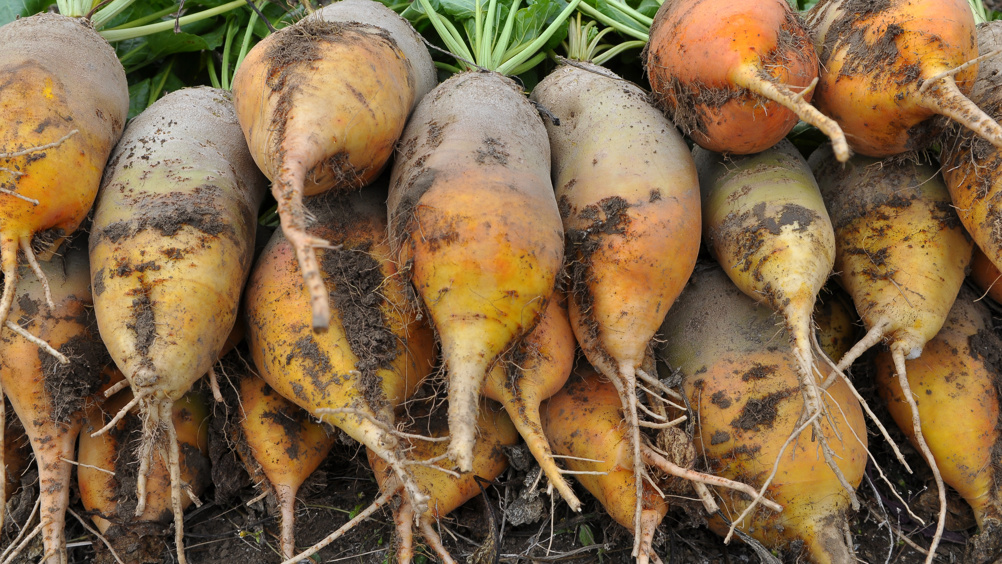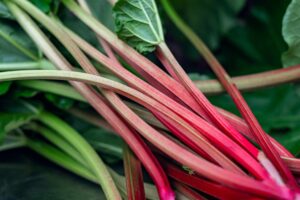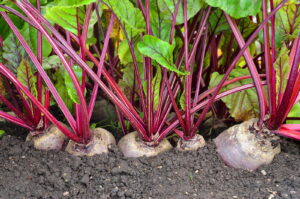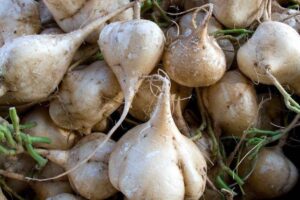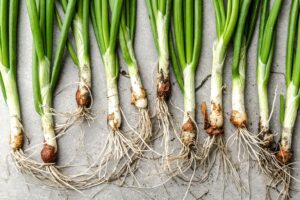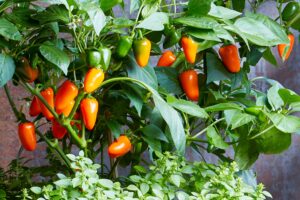How to Grow Mangelwurzel: A Complete Guide for Beginners to Experts
Are you looking to add a unique, historically significant root vegetable to your garden? Mangelwurzel (Beta vulgaris) might be the perfect addition to your growing space. This versatile root crop, also known as mangel beet or fodder beet, has been cultivated for centuries and is making a comeback in American gardens. Whether you have acres of land, a modest backyard garden, or just a few containers on your patio, this guide will walk you through everything you need to know about growing mangelwurzel successfully.
What is Mangelwurzel?
Before diving into growing techniques, let’s understand what mangelwurzel actually is. Mangelwurzel is a variety of beet developed primarily as livestock feed, but it has culinary applications as well. It produces massive roots that can weigh up to 20 pounds when fully mature. These roots are typically orange, yellow, or white, with some varieties having a reddish hue. Unlike common garden beets, mangelwurzel has a milder flavor and coarser texture, making it excellent for specific culinary uses and long-term storage.
According to the USDA Agricultural Research Service, root crops like mangelwurzel can play an important role in sustainable agriculture systems and food security.
Benefits of Growing Mangelwurzel
- Long storage life: Can be stored for up to 6 months in proper conditions
- Nutritional value: Rich in vitamins, minerals, and fiber
- Versatility: Can be used in cooking, fermenting, or as animal feed
- Climate adaptability: Grows well in various climate zones across the US
- Soil improvement: Deep roots help break up compacted soil
Starting Mangelwurzel from Seed
Mangelwurzel is grown exclusively from seed, and successful germination depends on proper timing and soil conditions.
When to Plant
Timing is crucial for successful mangelwurzel cultivation:
- Spring planting: Sow seeds 2-3 weeks before the last expected frost date in your area
- Summer planting: For fall/winter harvest, plant in mid-summer (June-July in most US regions)
- Soil temperature: Seeds germinate best when soil temperatures reach 50-85°F (10-29°C)
Soil Preparation and Requirements
Mangelwurzel thrives in well-prepared soil with specific characteristics:
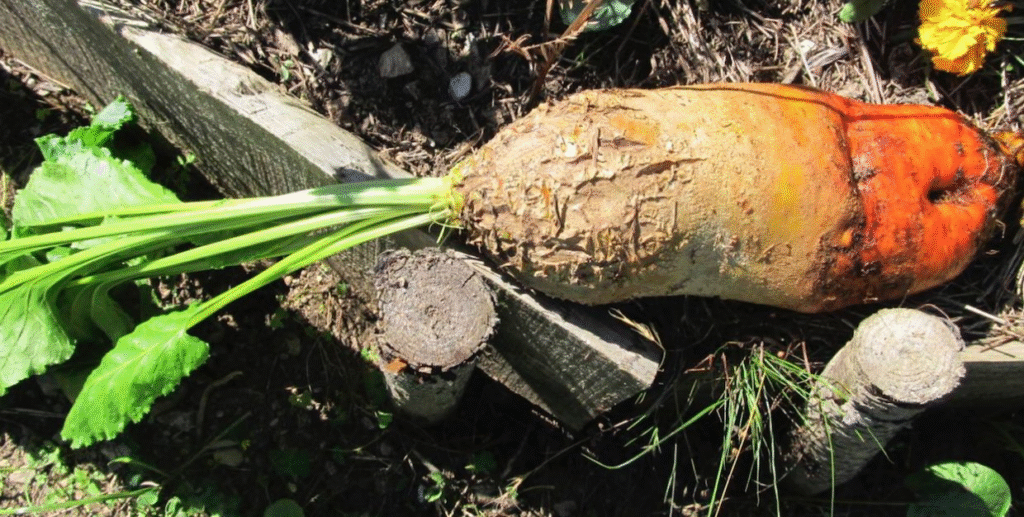
- Soil pH: Aim for 6.0-7.0 (slightly acidic to neutral)
- Soil type: Prefers loamy, well-draining soil
- Depth: Requires deep soil (at least 12 inches) for proper root development
- Amendments: Incorporate aged compost before planting
- Avoid fresh manure: Can cause forking and irregular root development
Direct Sowing Method
Follow these steps for direct sowing in your garden:
- Create furrows: Make 1-inch deep furrows in prepared soil
- Spacing: Space rows 18-24 inches apart
- Seed placement: Place seeds 2-3 inches apart within the row
- Covering: Cover with ½ inch of fine soil
- Watering: Water gently but thoroughly after planting
- Germination: Expect germination within 7-14 days
- Thinning: Once seedlings reach 2-3 inches tall, thin to 8-12 inches apart
Growing Mangelwurzel in Different Settings
Garden Bed Cultivation
Growing mangelwurzel in traditional garden beds offers the best conditions for maximum yield:
- Location: Choose a spot that receives full sun (6+ hours daily)
- Bed preparation: Double-dig beds to loosen soil to at least 12 inches deep
- Row spacing: Allow 24-30 inches between rows for easy access
- Irrigation: Provide consistent moisture, especially during root formation
- Mulching: Apply organic mulch to suppress weeds and retain moisture
- Support: For optimal growth, maintain even moisture throughout the growing season
Container Growing
Yes, you can grow mangelwurzel in containers, though with some limitations:
- Container size: Use deep containers at least 14-16 inches deep and 12 inches in diameter
- Potting mix: Use high-quality potting soil amended with compost
- Plant spacing: Limit to 1-2 plants per container, depending on size
- Watering: Monitor moisture carefully as containers dry out faster than garden soil
- Fertilization: Feed regularly with balanced liquid fertilizer
- Harvest expectations: Container-grown roots will be smaller than garden-grown ones
Indoor Cultivation
While challenging, growing mangelwurzel indoors is possible with the right setup:
- Light requirements: Provide 12-14 hours of bright light daily
- Growing medium: Use deep containers with high-quality potting mix
- Temperature: Maintain temperatures between 60-75°F (15-24°C)
- Humidity: Moderate humidity levels (40-60%) are ideal
- Air circulation: Ensure good air movement to prevent disease
- Space limitations: Expect significantly smaller roots when grown indoors
Care and Maintenance
Watering Schedule
Proper watering is essential for developing large, uniform roots:
- Early growth: Keep soil consistently moist until plants are established
- Mid-season: Provide 1-1.5 inches of water weekly
- Late season: Reduce watering slightly as harvest approaches
- Watering method: Drip irrigation or soaker hoses are ideal to avoid wetting foliage
Fertilization Requirements
Mangelwurzel has specific nutritional needs for optimal growth:
- Pre-planting: Incorporate balanced organic fertilizer into soil
- Early growth: Focus on nitrogen for leaf development
- Mid-season: Apply balanced fertilizer when roots begin to enlarge
- Avoid excess nitrogen: Too much can cause excessive leaf growth at the expense of root development
Common Pests and Diseases
Monitor your plants regularly for these potential issues:
| Pest/Disease | Symptoms | Prevention/Treatment |
|---|---|---|
| Leaf miners | Winding trails in leaves | Remove affected leaves; use row covers |
| Flea beetles | Small holes in leaves | Diatomaceous earth; row covers in spring |
| Cercospora leaf spot | Brown spots with red borders | Crop rotation; avoid overhead watering |
| Root rot | Wilting; soft, rotting roots | Well-draining soil; avoid overwatering |
| Powdery mildew | White powdery coating on leaves | Proper spacing; morning watering only |
Companion Planting
Enhance your mangelwurzel’s growth with these companions:
- Good companions: Onions, garlic, chamomile, mint
- Poor companions: Pole beans, mustard greens
- Beneficial insects: Plant dill, fennel, or calendula nearby to attract pollinators and beneficial insects
Harvesting and Storage
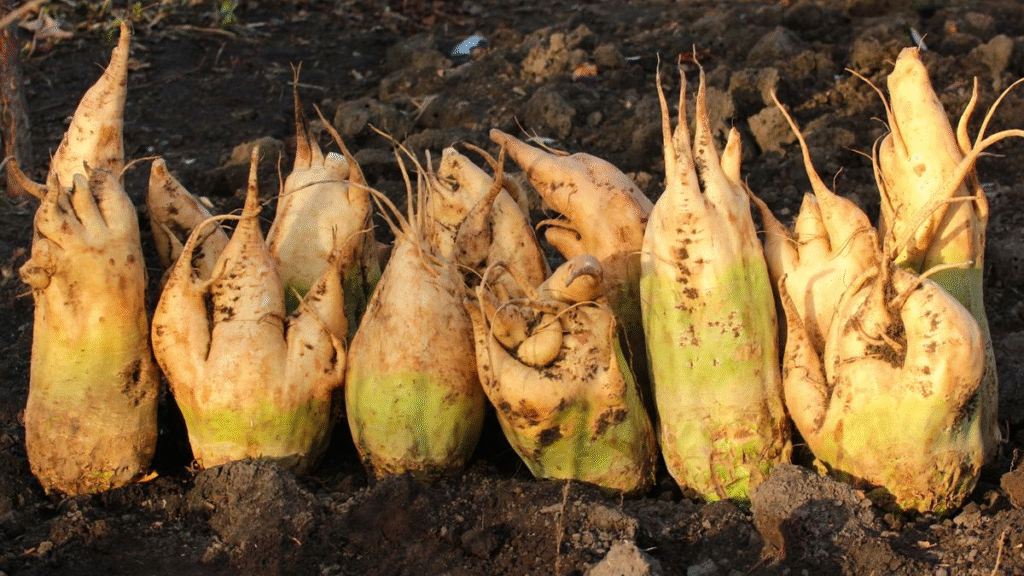
When to Harvest
Timing your harvest is crucial for quality and storage potential:
- Baby roots: Can be harvested when roots are 2-3 inches in diameter
- Full maturity: Usually 120-150 days after planting
- Harvest indicators: Lower leaves yellowing; roots showing above soil
- Weather considerations: Harvest before hard freezes in northern climates
Harvesting Techniques
Proper harvesting protects roots from damage:
- Loosening soil: Use a garden fork to gently loosen soil around roots
- Lifting: Carefully lift roots by grasping the base of the leaves
- Cleaning: Gently brush off excess soil (don’t wash if storing)
- Trimming: Twist off leaves 1-2 inches above the crown
- Curing: Allow roots to dry in a cool, shaded area for 1-2 days before storage
Storage Methods
Mangelwurzel excels in long-term storage:
- Root cellar: Store in damp sand at 33-40°F (1-4°C) with 90-95% humidity
- Refrigeration: Wrap in plastic and store in refrigerator for up to 2 months
- Clamp storage: Traditional method of burying in straw-lined trenches
- Processing: Can be fermented, dehydrated, or frozen for preservation
Mangelwurzel in the US Market
Despite being somewhat overlooked in modern American agriculture, mangelwurzel has several emerging markets:
Current Market Status
- Heritage farming: Growing popularity among heritage and historical farms
- Specialty produce: Appearing in farmers’ markets and CSA shares
- Microgreens: Young mangelwurzel leaves sold as specialty greens
- Value-added products: Fermented products and specialty foods
Growing for Market
If you’re considering growing mangelwurzel commercially:
- Target market: Identify specialty restaurants, food co-ops, and farmers’ markets
- Variety selection: Choose varieties based on intended use and market preferences
- Certification: Consider organic certification to access premium markets
- Value-added potential: Explore processing options for increased profitability
Culinary Uses
Mangelwurzel is more versatile in the kitchen than many people realize:
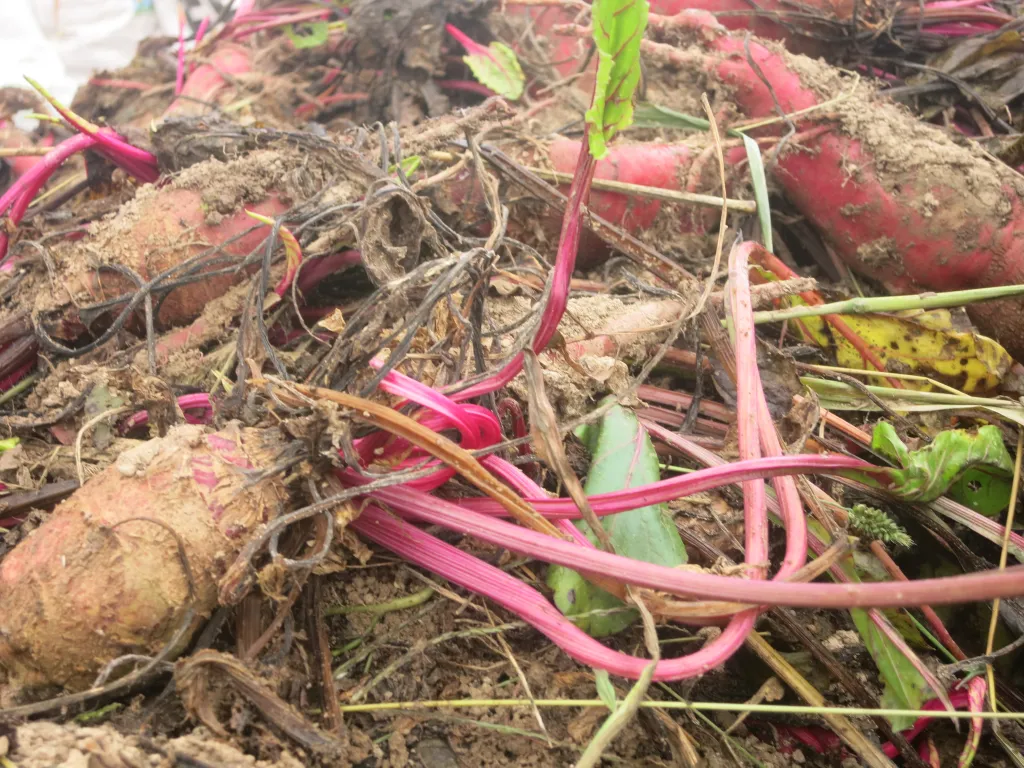
Traditional Preparations
- Roasting: Brings out natural sweetness; treat like other root vegetables
- Boiling: Use in soups and stews for hearty flavor
- Fermenting: Traditional preservation method with probiotic benefits
- Juicing: Can be juiced alone or combined with other vegetables
Modern Applications
Today’s chefs are rediscovering mangelwurzel:
- Chips and fries: Sliced thin and fried or baked for unique vegetable chips
- Gratins and casseroles: Layered with cream and cheese for comfort food
- Pickled: Quick-pickled for tangy, colorful additions to meals
- Flour substitute: Dried and ground for partial flour replacement in baking
Saving Seeds
Preserving genetic diversity by saving mangelwurzel seeds:
- Selecting parent plants: Choose the healthiest plants with desirable traits
- Vernalization: Mangelwurzel is biennial, requiring vernalization (winter cold period) to produce seeds
- Overwintering: In zones 7+, can overwinter in ground; in colder zones, store roots and replant
- Flowering: Plants will flower in their second year
- Isolation: Keep at least 1/4 mile from other beet varieties to prevent cross-pollination
- Seed collection: Harvest seeds when dry and store in cool, dry place
Conclusion
Growing mangelwurzel can be a rewarding addition to your garden, whether you’re looking to connect with agricultural heritage, expand your vegetable diversity, or explore unique culinary options. With proper care and attention to the specific needs of this fascinating root crop, you can enjoy abundant harvests of this versatile vegetable. From garden to table, mangelwurzel offers a connection to our agricultural past while providing sustainable food options for the future.
Remember that climate adaptations may be necessary depending on your specific location within the US. For region-specific planting dates and recommendations, consult your local extension office through the USDA Cooperative Extension System.
Whether you’re growing in a spacious garden, containers on your patio, or even indoors under lights, mangelwurzel can be a fascinating and productive addition to your growing space.
